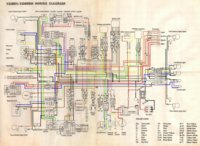the componnents on that site look fine! At the risk of stating the obvious, here a few things that are important:
1. regardless of what connectors you use (spade, round, multi connector block, whatever) they are no good unless you connect them correctly. this means buying the crimper that the connector requires, soldering, or both.
2. Make sure that the connectors you choose can handle the current being put through the connection. usualy not much of an issue because once they are big enough to get your hands on, they can handle about as much current as our bikes might use, but worth checking.
3. you only need to use connectors at points where you will want to be able to disconnect a portion of the harness for service. you could add connectors each time you branch off from the main harness, but all you are doing is adding oportunities for bad connections in the future. if you can stand to have it wired directy (i.e. it won't get in the way of serviceing your bike), don't add connectors.
3. in addition to those connectors, get some heat shrink. Adhesive lined stuff (basically a layer of hot glue) will seal around the backs of those connectors to keep water out and it is super easy to use.
4. make sure you use the correct wire. Gague and construction are both important. Gague determines how much current the wire can handle, and construction determines flexibility, wear characteristics, and such. Drepy's harness thread says specifically what types to use where.
5. Use a color code! either one that you document for yourself, or (my prefernce) match the EOM diagram. it can get a little pricey to buy all the different color wires you will need, but is well worth it if you need to trace problems, make modifications or whatever in the future. Also, I have seen places where you can buy short lenghts of wire instead of whole spools... might be worth looking into if you don't plan to do more wiring in the future...



